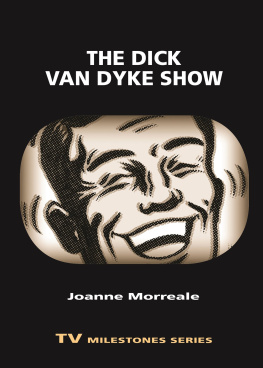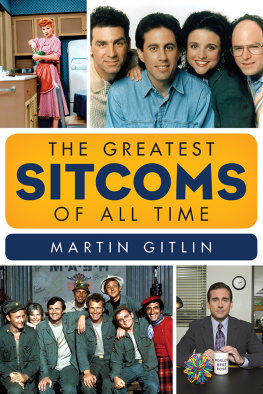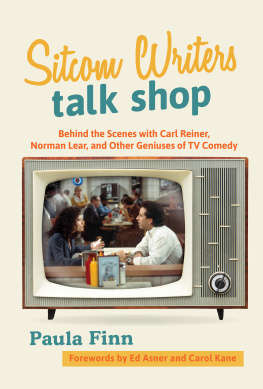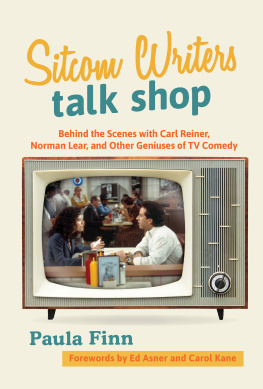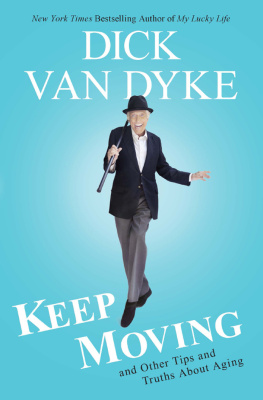TV Milestones
Series Editors
Barry Keith Grant
Brock University
Jeannette Sloniowski
Brock University
TV Milestones is part of the Contemporary Approaches to Film and Media Series.
A complete listing of the books in this series can be found online at wsupress.wayne.edu
General Editor
Barry Keith Grant
Brock University
Advisory Editors
Robert J. Burgoyne
University of St. Andrews
Caren J. Deming
University of Arizona
Patricia B. Erens
School of the Art Institute of Chicago
Peter X. Feng
University of Delaware
Lucy Fischer
University of Pittsburgh
Frances Gateward
California State University, Northridge
Tom Gunning
University of Chicago
Thomas Leitch
University of Delaware
Walter Metz
Southern Illinois University

2015 by Wayne State University Press, Detroit, Michigan 48201. All rights reserved. No part of this book may be reproduced without formal permission. Manufactured in the United States of America.
19 18 17 16 155 4 3 2 1
ISBN 978-0-8143-4031-8 (paperback) ; ISBN 978-0-8143-4032-5 (ebook)
Library of Congress Control Number: 2015952488

CONTENTS
ACKNOWLEDGMENTS
O ne of the joys of studying television is watching a show you think you know and realizing it is so much richer than you ever remembered. Id grown up watching reruns of The Dick Van Dyke Show, and I remembered it as a funny and familiar classic sitcom. But I was continually surprised and delighted, and I realized that Id missed so much of its sophisticated humor and layers of meaning in my earlier years.
I want to thank Paul Rocklin and Bonnie Waltch for encouraging me to undertake this project, and for their many insights into favorite episodes.
I appreciate the efforts of all of the people who helped move this book from conception to completion. Editor Annie Martin gave me encouragement in the early stages of preparing the manuscript. Series editors Barry Keith Grant and Jeannette Sloniowski, and two anonymous readers, gave me valuable feedback that helped me to improve the first draft. Alicia Vonderharr provided careful copyediting. Bryce Schimanski was very patient with my attempts to capture low resolution images (they didnt make it into the book). Kristin Harpster moved the book quickly though the final stages of the editing process, and Lucas Freeman compiled a meticulous index on short notice. All of you helped make the process go smoothly. Last but not least, Id like to thank Richard, Emma, and Isabel Lewis, who know more about vaudeville clowns than they ever thought possible.
INTRODUCTION
I remember exactly when it happenedit was on 96th Street by the East River in NY. I was driving my car downtown from New Rochelle, wondering what ground do I stand on that no one else stands on? I thought, I am an actor and a writer who worked on the Sid Caesar shows. Thats a different milieu: the home life of a television show writer.
Carl Reiner, quoted in Weissman and Sanders, 1
F rom this initial seed came The Dick Van Dyke Show (196166, CBS). A comedy about television writers known for its sharp writing and strong ensemble acting, it regularly appears in lists of the top television shows of all time. Over the course of its run, it was nominated for twenty-five Primetime Emmys and won fifteen, in categories for writing, directing, acting, and outstanding achievement in comedy. The show has rarely been off the air since 1961, and contemporary audiences remain familiar with the program because it is available on DVD, on cable stations, or on streaming sites such as Netflix, Hulu, or YouTube. In this book, I consider The Dick Van Dyke Show as an iconic cultural text and a television milestone that draws on the past, shapes it to fit the present, and inspires many programs that follow. It marks an important transitional moment in American television and culture: it appeared at a moment when comedy-variety shows were disappearing and sitcoms were becoming predominant television forms, when Eisenhower-era politics were being supplanted by Kennedys New Frontier, and when the postwar generation of the fifties was becoming a newly affluent, upwardly mobile middle class. In the course of addressing its cultural milieu, The Dick Van Dyke Show altered the form and content of the sitcom genre. Although it has been off the air since 1966, it made an indelible mark on television and continues to exert an influence. In this book, I underscore its contributions to both television history and cultural discourse.
Origins of The Dick Van Dyke Show (196166)
The Dick Van Dyke Show was one of the first television programs with a hyphenate: a writer-producer who exerted creative control.Reiner was eventually transferred to a base in Hawaii, where he performed in revues and became skilled in comic improvisation. When he returned to New York after the war, he began to seek comedic roles, eventually leading to a part in a Broadway musical comedy revue. Based on this experience, in 1950 he was hired as a supporting actor on Sid Caesars then-innovative comedy-variety series Your Show of Shows, which combined elements of sketch comedy and musical revue. In order to break up the monotony of long rehearsals, he sat in the writers room and eventually began to contribute ideas. He worked among notable talents, including Mel Brooks, Lucille Kallen, Selma Diamond, Mel Tolkin, and Neil Simon, although his contributions were unattributed (Waldron 10). When Your Show of Shows was cancelled in 1954, Caesar adapted with a sketch comedy show, Caesars Hour (195457) with Reiner on staff as both actor and writer. Reiner also played himself on Caesars final television show, Sid Caesar Invites You (1958), which lasted only five months.
In accord with demographic shifts from the city to newly built suburbs in the fifties, Reiner commuted into Manhattan while he lived in New Rochelle. As Gerard Jones notes, by 1953 one out of five Americans lived in the suburbs, and the number kept growing (88). Like many first-generation children of immigrants, Reiner was assimilating and moving into the middle class, which provided him with writing material. In 1958, he published a fictionalized version of his autobiography, Enter Laughing, which describes the main characters struggle to become a successful actor despite his familys pressure to work in the millinery business. He planned a sequel to the book, but when his agent Harvey Kalcheim suggested that he find a sitcom to star in as his next career move, he decided to write his own instead. The result, then titled Head of the Family, began where Enter Laughing left off. Reiners idea was to depict his experience as a television writer who had established upscale, culturally assimilated domesticity in the suburbs. After years of receiving no credit for his writing contributions, he made his main character head writer of a comedy team.


Opening credits of Head of the Family, starring Carl Reiner.
Reiner wrote the pilot and additional twelve episodes of Head of the Family before he had financing or a sponsor. While these episodes were later modified by executive producers Sheldon Leonard and Danny Thomas, as well as the team of writers who eventually assisted Reiner, they provided what Reiner termed, a nucleus, a bible, for anybody who would help write it after that (Weissman and Sanders 2). As David Marc remarked, the paradigms of Reiners life: ethnicity and assimilation, urbanity and suburbanity, presentationalism and representationalism, became the mythic resources from which the show would be refined (1989, 93). Reiner remained producer and head writer of the series from its inception up until its final two seasons. Cowriters and story editors Bill Persky and Sam Denoff were his primary assistants, along with a small cadre of other writers such as John Whedon, Garry Marshall, and Jerry Belson. Even then, Reiner wrote the scripts for every episode; though he lost some control over the last twelve episodes when he left to act in the film
Next page
